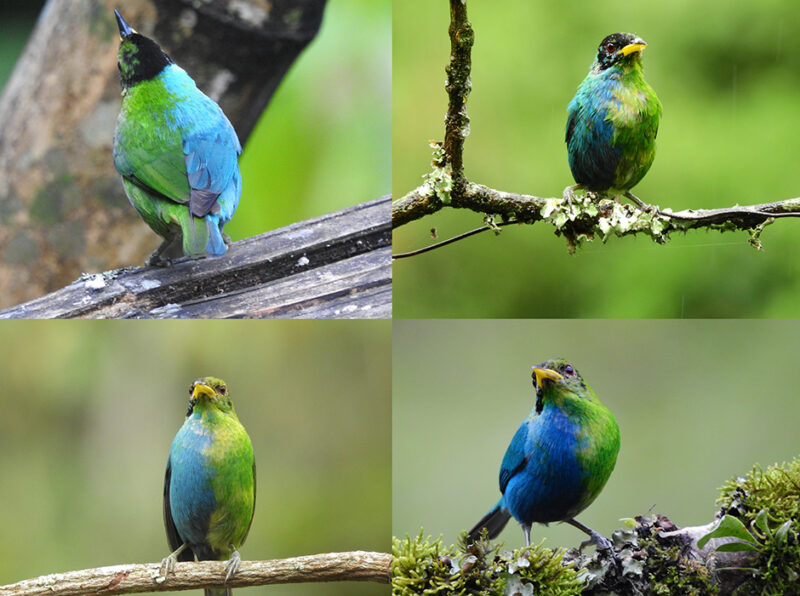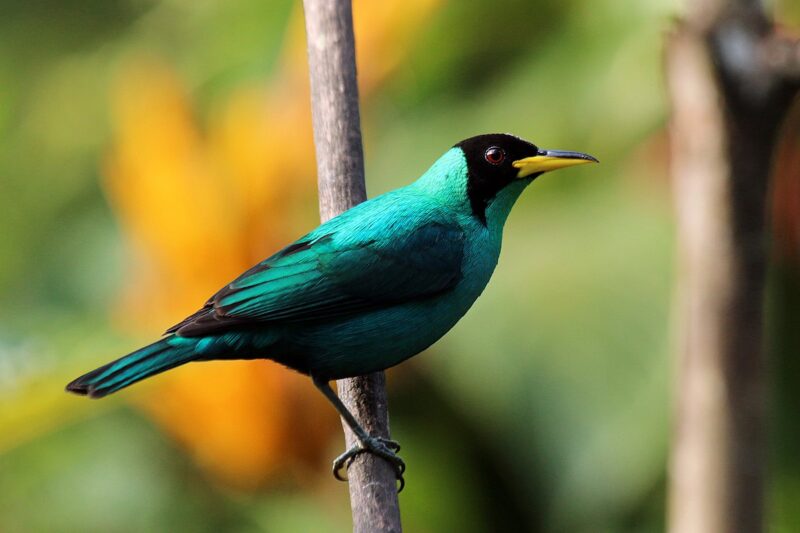
Rare bird contains both sexes
On a small farm nestled among forestland a few miles outside of Manizales, Colombia, the proprietors had set up a feeding station for bird watching. In October 2021, they noticed a unique, new visitor. The bird was a green honeycreeper, but unlike any they’d seen. The right half of the bird had the aqua blue plumage of a male, while the left half had the bright green plumage of a female. It was bilaterally gynandromorphic, a rare condition in which an organism exhibits both male and female characteristics. On December 12, 2023, the University of Otago in New Zealand said that one of their professors, Hamish Spencer, and amateur ornithologist John Murillo, documented the bird in photographs and a video.
The 2024 lunar calendars are here! Best Christmas gifts in the universe! Check ’em out here.
Spencer, an evolutionary geneticist, said:
Many birdwatchers could go their whole lives and not see a bilateral gynandromorph in any species of bird. The phenomenon is extremely rare in birds … It is very striking, I was very privileged to see it.
He went on to say that the photographs of the bird are:
… arguably the best of a wild bilateral gynandromorphic bird of any species ever.
Murillo, Spencer and colleagues published their findings on the bird in the peer-reviewed Journal of Field Ornithology in December 2023.
More on gynandromorphism
It’s easiest to see gynandromorphism in animals that have distinctly different characteristics between the two sexes. Some of the animals it’s easy to spot the condition in include butterflies and dragonflies. And check out this gynandromorphic cardinal. While sightings like this are rare, as JSTOR Daily said:
Given how hard gynandromorphy is to detect, it might be more common than we realize.
How do some animals end up with two genders? In the case of the green honeycreeper, Spencer said:
The phenomenon arises from an error during female cell division to produce an egg, followed by double-fertilization by two sperm.
The paper explained that, as a consequence of the double fertilization, the bird had one side with female cells and the other with male cells.
Before this bird, there had been one other documentation of gynandromorphism in a green honeycreeper. In the images below, you can see what a male and female green honeycreeper look like. While in this case, the male attributes appear on the right side of the bird and the female on the left side, in the only other case the sides were reversed.
The paper said:
Our observations extended over an unusually long period (21 months) and are the first of a gynandromorph of this species alive in the wild.
Male and female green honeycreepers


Reproduction in gynandromorphic animals
The observers said the rare bird stays in the farm and forested area for about four to six weeks at a time before disappearing for around 8 weeks. And they reported that the bird’s vocalizations did not sound unusual. Nor did the observers notice that any of the other birds harassed it. But they also noted that the bird kept to itself, often waiting until other birds were finished eating before approaching the feeders.
The researchers didn’t get a closeup look at the bird to determine if it had different sex organs on each side of its body, though researchers have often seen that with other gynandromorphic animals. And because this bird is not socializing, the paper said:
… it seems unlikely, therefore, that this individual would have had any opportunity to reproduce.
However, that is not the case with all gynandromorphic animals. The paper noted that other half-male, half-female animals have sometimes mated with males and sometimes with females, and successfully reproducing.
Spencer said that he hoped the discovery of the half-male, half-female green honeycreeper would inspire people to “treasure exceptions”.
Bottom line: See the first video of a rare bird – a half-male, half-female honeycreeper – along with photos. Learn more about bilateral gynandromorphism, when an organism displays both sexes on opposite sides of its body.











